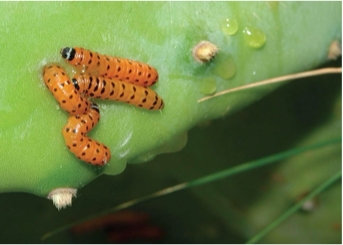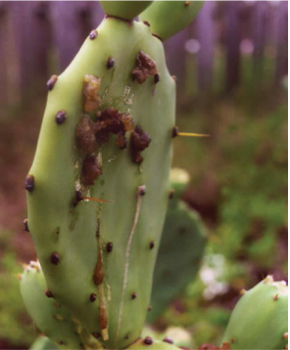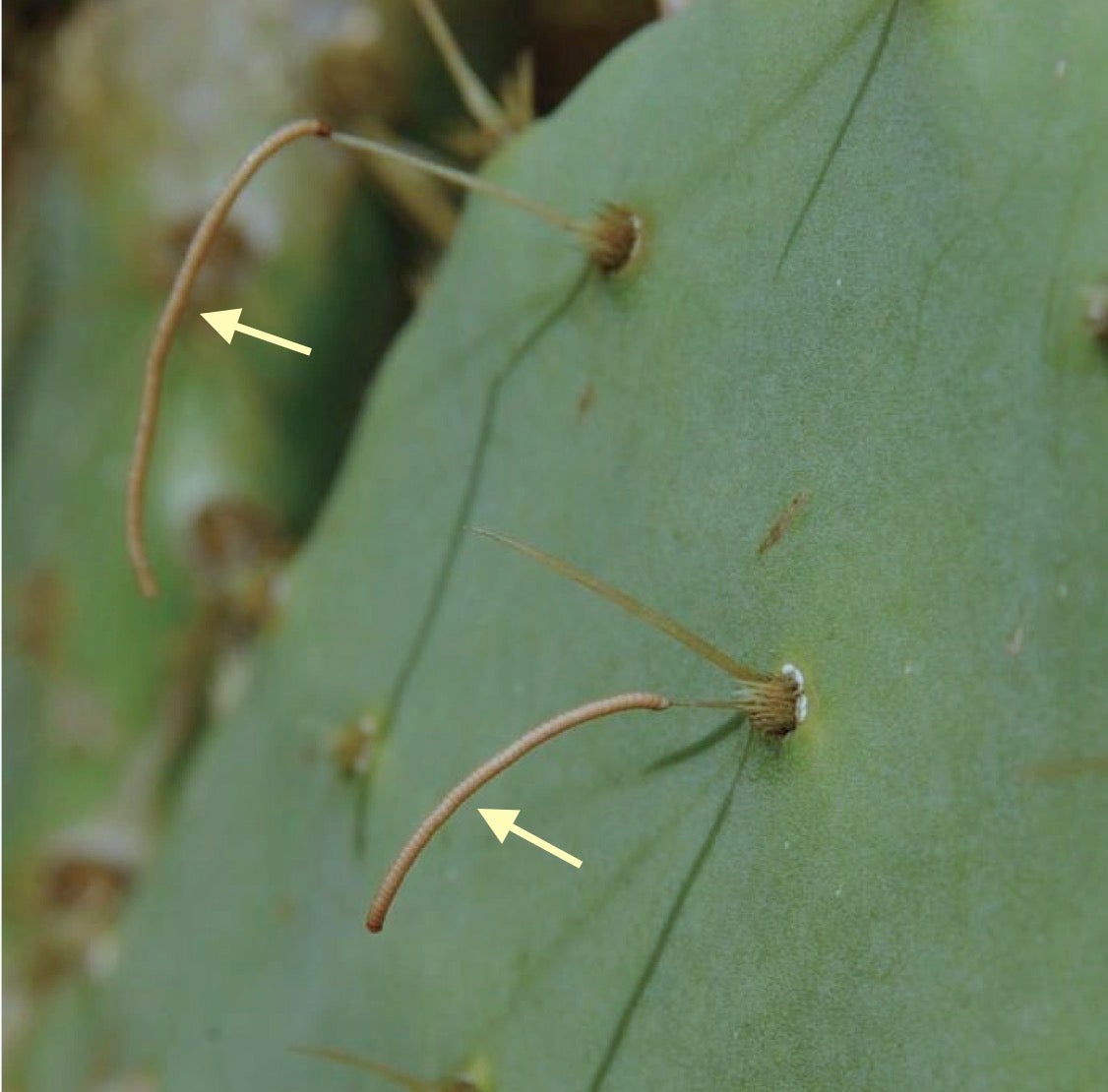Pest Alert: Cactus Moth spotted in Texas
Published 12:04 am Saturday, June 13, 2020
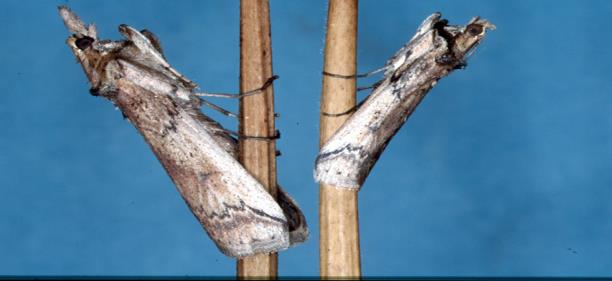
- Adult Cactus Moths, female on left, male on right
|
Getting your Trinity Audio player ready...
|
By Commissioner Sid Miller, Texas Department of Agriculture and Sheri Bethard, Texas Certified Master Gardener
The Cactus Moth has been found in the Upper Coastal Texas Counties of Brazoria, Chambers, Colorado and Matagorda. If you spot this pest, immediately report to the TDA Plant Quality Program by calling 512 463-7660 or email PlantQuality@TexasAgriculture.gov. I have seen numerous stands of prickly pear cactus around our county. I know of some on Ferry Dr. in Bridge City and some on Hwy 105 S. in Vidor. I am sure there are more around the county that I have not seen so we all need to be vigilant in watching for this pest.
The Cactus Moths feed on prickly pear cactus and other cactus species in the genus Opuntia. These include the Purple prickly pear, Babary fig, Tulip prickly pear, Bunny ears prickly pear, Violet prickly pear, Pancake prickly pear and Beaver tail pear cacti, just to name a few of the over 90 varieties available.
The cactus moth, Cactoblastis cactorum (Berg), is a major pest of prickly pear cactus (Opuntia spp.). Cactus moth larvae live and feed inside the pads of prickly pear cacti. Voracious feeding by cactus moth larvae results in the destruction of entire stands of prickly pear cactus.
Native to South America, the cactus moth first appeared in the USA in 1989 in the Florida Keys. Since its initial introduction, the cactus moth has spread throughout the coastal areas of the southeastern USA. Cactus moth was first detected in Texas in 2017 in Brazoria county and has since been found in Matagorda, Colorado, and Chambers counties. Adult cactus moths have been known to disperse naturally a maximum of 16 miles. Commercial sales of infected cacti, as well as weather events, could spread the larvae and eggs greater distances.
This invasive pest gravely threatens the native prickly pear cacti in Texas. TDA urges nurseries, county extension agents, master gardener associations, and the general public to actively scout for this pest on prickly pear cactus. Be aware there are a number of native species of Lepidoptera larvae that can be found feeding on prickly pear and may be confused with Cactoblastis cactorum, so correct identification by a qualified entomologist is important.
To prevent further spread of cactus moth in the U.S., it is very important to detect, report and rapidly respond to all new outbreaks of the pest. The first priority must be to make a serious attempt to eradicate such infestations. Until sterile insect release technology and other control methods are developed and tested by the USDA Agriculture Research Service and other groups, confirmed infestations should be eradicated by manual removal and destruction of egg-sticks and infected cacti stems. Effective control of the cactus moth using insecticides is still in the testing phase.
How to Spot the Cactus Moth
How to spot this invasive pest?
- Check for larvae.
The larval stage is the most distinctive life stage of the cactus moth. Mature larvae are reddish-orange
with black spots forming transverse bands. (Fig. 1)
- Check for damage to cactus pads.
Cactus moth larvae internally feed on the pads of prickly pear cacti. Damaged pads will show
characteristic oozing of plant juices and insect excrement. (Fig. 2 & 3)
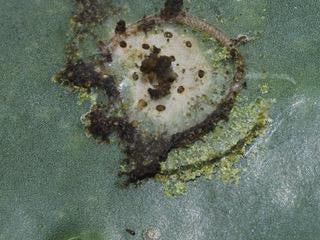
Fig. 2 Prickly-pear cactus pad with early evidence of a cactus moth infestation. A coin=sized tan patch with 5-9 exit holes surround the original entry. These small holes are used by larvae to expensive droppings
- Check for egg sticks.
Adult cactus moths lay chains of eggs called egg sticks that resemble the naturally occurring spines on
prickly pear pads. The egg sticks are distinguished from spines by their curved appearance. (Fig. 4)
For more information please check our website https://txmg.org/orange under the heading Resources; Diseases, Garden Pests, Ants & Snakes or our FaceBook page Orange County Texas Master Gardeners in the Files section. If you have any horticulture questions, please contact our HotLine, Tuesday and Thursadys, 10 a.m. – 2p.m., for our Master Gardener Specialist to help answer your concerns at 409 882-7010 or send us a message thru our website Contact link or post on our FaceBook page.


